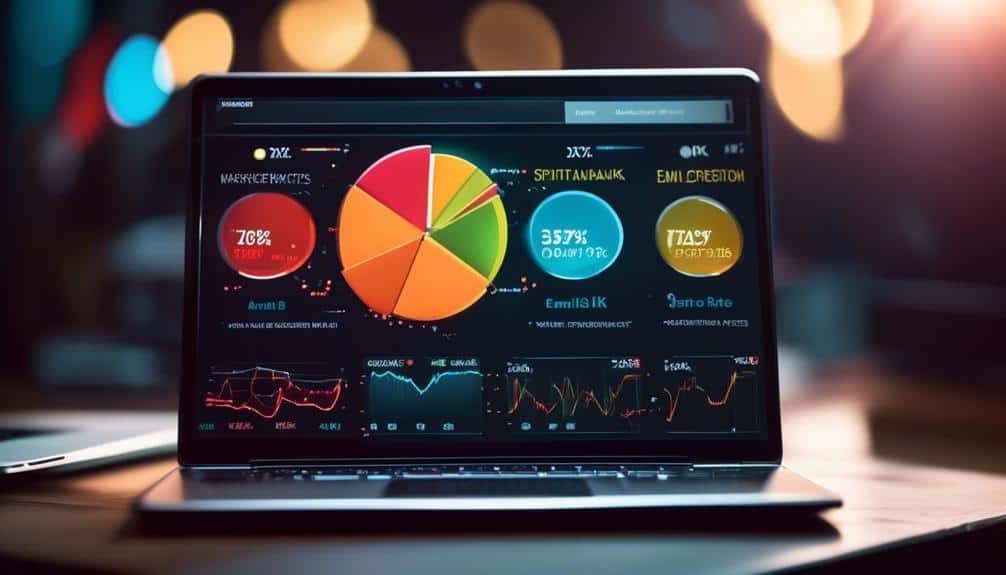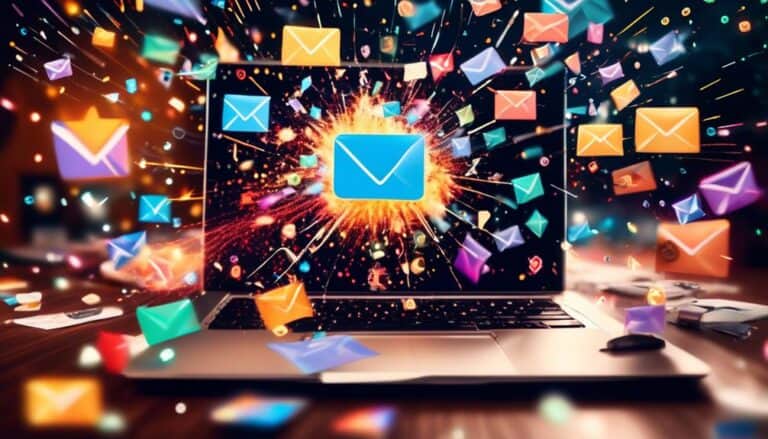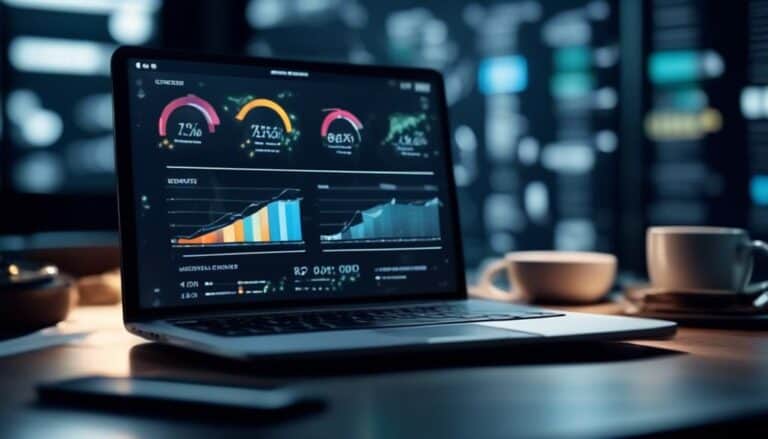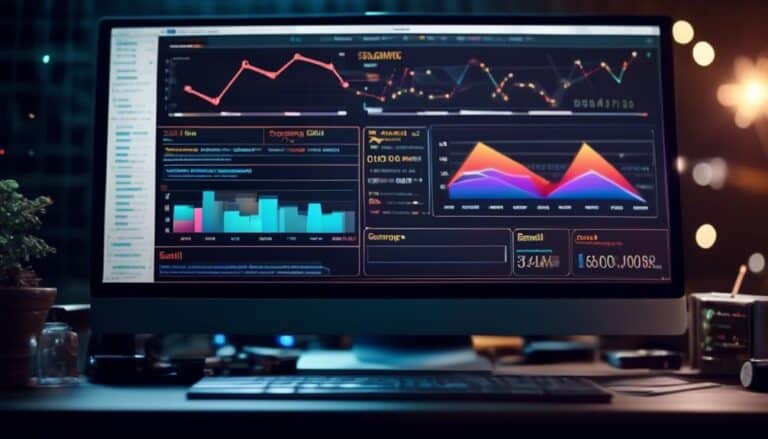Last Chance: Expert Tips for Setting Up Automated Email Sequences Like a Pro
Looking to take your email marketing to the next level?
Don't miss out on your last chance to learn expert tips for setting up automated email sequences like a pro.
Whether you're a seasoned marketer or just starting out, mastering the art of email automation can significantly boost your engagement and conversion rates.
From planning your email funnel to analyzing performance metrics, this discussion will cover everything you need to know to make your automated email sequences a success.
So, what are you waiting for?
Discover the secrets to creating effective email sequences that will engage your audience and drive results.
Key Takeaways
- Automated email sequences can streamline communication processes and save time.
- Crafting compelling subject lines can increase open rates and engagement with subscribers.
- Designing engaging email templates with clear calls-to-action can drive conversions.
- Personalization and segmentation strategies can help deliver targeted and relevant messages to subscribers.
Why Automated Email Sequences?

Automated email sequences offer a strategic and data-driven solution to engage with your audience efficiently and effectively. Implementing an automated email sequence allows you to streamline your communication process, saving you time and effort. By setting up a series of pre-written emails that are triggered based on specific actions or time intervals, you can strategically deliver personalized content to your audience at the right moment.
One of the key benefits of using automated email sequences is the ability to nurture leads and build relationships with your audience. By providing valuable content and relevant information throughout the sequence, you can establish trust and credibility with your subscribers, increasing the chances of converting them into loyal customers.
Furthermore, automated email sequences allow you to create a consistent and cohesive brand experience. By developing a well-thought-out strategy, you can ensure that each email aligns with your brand's voice and objectives. This consistency builds brand recognition and enables your audience to develop a strong connection with your brand.
Additionally, automated email sequences offer the ability to track and analyze data. By monitoring open rates, click-through rates, and other engagement metrics, you can gain valuable insights into the effectiveness of your emails and make data-driven decisions to optimize your campaigns.
Planning Your Email Funnel
Now that you understand the benefits of automated email sequences, it's time to strategically plan your email funnel to effectively engage with your audience and drive conversions. Email funnel planning is a crucial step in creating a successful email marketing strategy. By carefully mapping out your email sequence strategy, you can ensure that your messages are delivered in a timely and relevant manner, maximizing their impact and increasing the likelihood of conversions.
To help you in the planning process, consider the following three key components of an effective email funnel:
| Stage | Objective | Email Content |
|---|---|---|
| 1. Awareness | Introduce your brand and build trust | Welcome email, brand story, educational content |
| 2. Consideration | Nurture leads and provide value | Case studies, testimonials, product comparisons |
| 3. Conversion | Drive action and close the sale | Limited-time offers, discounts, urgency-driven CTAs |
At each stage of the funnel, your email content should align with the specific objective. By strategically guiding your audience through these stages, you can effectively build relationships, demonstrate the value of your product or service, and ultimately drive conversions.
Crafting Compelling Subject Lines

Crafting compelling subject lines is a crucial step in grabbing your audience's attention and increasing email open rates. The subject line is the first thing your subscribers see in their inbox, so it needs to be catchy and compelling enough to entice them to click. To craft a subject line that stands out, you need to be strategic and data-driven.
Start by analyzing your audience's preferences and behavior. Look at past email open rates and see which subject lines performed well. Incorporate those patterns into your crafting process. Use language that resonates with your audience and speaks to their needs and desires. Personalization is also key – use your subscriber's name or location to make the subject line feel more tailored to them.
Keep your subject lines concise and to the point. Research shows that subject lines with 41-50 characters tend to have the highest open rates. Use action-oriented verbs and create a sense of urgency to encourage immediate action. Experiment with emojis to add a touch of visual appeal and stand out in a crowded inbox.
Remember that your audience desires to be served, so focus on the value you're offering. Highlight the benefits or solutions they can expect from opening your email. Consider using numbers or intriguing questions to pique curiosity. A well-crafted subject line should leave your subscribers wanting more and eager to open your email.
Crafting catchy subject lines is an art, but with the right data and strategy, you can increase email open rates and improve your overall engagement. Take the time to experiment, analyze, and refine your subject lines to ensure you're capturing your audience's attention right from the start.
Designing Engaging Email Templates
To create email templates that captivate your audience and drive engagement, focus on strategic design elements that align with your brand and resonate with your subscribers. Engaging email design and email template optimization are essential for ensuring that your emails stand out and deliver results.
When designing your email templates, consider the following key elements:
| Element | Description |
|---|---|
| 1. Clear and Compelling Subject Line | A strong subject line grabs attention and entices subscribers to open your email. Use action words and create a sense of urgency or exclusivity. |
| 2. Eye-catching Header | The header should include your brand logo and a visually appealing layout that reflects your brand identity. Make sure it is consistent across all your emails to build recognition and trust. |
| 3. Relevant and Personalized Content | Tailor your content to your audience's interests and preferences. Use dynamic content blocks to personalize each email based on subscriber data such as their purchase history or browsing behavior. |
| 4. Call-to-Action (CTA) | Place a clear and prominent CTA button that stands out from the rest of the content. Use action-oriented language and make it easy for subscribers to take the desired action, whether it's making a purchase, signing up for an event, or downloading content. |
Personalization and Segmentation Strategies

To maximize the effectiveness of your automated email sequences, it's crucial to focus on personalization and segmentation strategies. Customized content for individuals allows you to deliver tailored messages that resonate with each recipient.
By implementing targeted audience segmentation, you can ensure that your emails reach the right people at the right time.
To achieve these goals, employ effective personalization techniques such as dynamic content, personalized subject lines, and behavioral triggers.
Customized Content for Individuals
Maximize the impact of your automated email sequences by tailoring the content to each individual recipient through personalization and segmentation strategies. Customized content allows you to create personalized messaging that resonates with your audience on a deeper level.
Here are five ways to achieve this:
- Segment your email list based on demographics, interests, and behavior
- Use dynamic content to deliver targeted messages based on recipient preferences
- Incorporate personalized data, such as their name or recent interactions, to create a sense of familiarity
- Implement A/B testing to optimize your content and ensure it's resonating with each individual
- Leverage automation tools to deliver timely and relevant messages based on specific triggers
Targeted Audience Segmentation
By implementing targeted audience segmentation strategies, you can enhance the effectiveness of your automated email sequences and ensure that your messaging resonates with each individual recipient.
Targeted audience analysis is the key to understanding your customers and tailoring your content to their specific needs and preferences. By segmenting your audience based on factors such as demographics, purchase history, and engagement levels, you can deliver personalized emails that speak directly to their interests.
Customer segmentation strategies allow you to send relevant offers, recommendations, and educational content that will engage and delight your recipients. This approach not only increases the likelihood of conversions but also fosters a sense of connection and loyalty with your audience.
Effective Personalization Techniques
Implementing effective personalization techniques is crucial for optimizing your automated email sequences and ensuring that your messaging resonates with each individual recipient. By tailoring your emails to meet their specific needs and preferences, you can greatly increase engagement and conversion rates.
To achieve this, consider the following personalization tactics:
- Dynamic content: Deliver customized content based on factors like past purchases or browsing behavior.
- Personalized subject lines: Grab attention and increase open rates by including the recipient's name or referencing their recent activity.
- Behavioral triggers: Set up automated emails triggered by specific actions or events, such as abandoned carts or completed purchases.
- Segmentation: Divide your audience into smaller groups based on demographics, interests, or buying behavior to send more relevant content.
- A/B testing: Experiment with different personalization strategies to identify what resonates best with your audience.
Optimizing Email Delivery and Timing

To ensure your emails are delivered promptly and effectively, consider optimizing your email delivery and timing. Email deliverability plays a crucial role in the success of your email campaigns. It refers to the ability of your emails to reach the recipients' inboxes without being flagged as spam. By following best practices and implementing certain strategies, you can improve your email deliverability and increase the chances of your emails being seen and read by your audience.
When it comes to email timing, it's important to consider the optimal time to send your messages. Different studies and research have shown varying results, so it's essential to analyze your own data and understand your audience's behavior. Experiment with different send times and track open and click-through rates to determine the best time to engage your subscribers.
Here is a table summarizing key considerations for optimizing email delivery and timing:
| Email Deliverability | Email Timing |
|---|---|
| Monitor sender reputation | Analyze audience behavior |
| Use a reputable email service provider | Experiment with different send times |
| Use a double opt-in process for subscribers | Track open and click-through rates |
| Segment your email list | Send emails at times of high engagement |
| Monitor and improve email engagement metrics | Use A/B testing to determine the optimal time |
A/B Testing for Continuous Improvement
To continuously improve the effectiveness of your email campaigns, it's vital to conduct A/B testing to fine-tune your strategies and optimize engagement with your audience. A/B testing allows you to compare different versions of your email content and identify which one performs better in terms of conversion rates.
Here are five A/B testing strategies to help you measure and improve your email campaign's performance:
- Subject Line Variation: Test different subject lines to see which one grabs your audience's attention and entices them to open your email.
- Call-to-Action Placement: Experiment with different positions and designs for your call-to-action buttons to determine the most effective way to drive conversions.
- Personalization: Test personalized email content against generic content to see if personalization increases engagement and conversion rates.
- Email Layout: Try different layouts and designs to determine which one provides a better user experience and encourages readers to take action.
- Send Time Optimization: Test different send times to find the optimal time when your audience is most likely to engage with your emails.
Analyzing Email Performance Metrics

Now it's time to analyze the performance metrics of your email campaigns.
Two key metrics to focus on are email open rates and click-through rates. By examining these metrics, you can gain valuable insights into how well your emails are resonating with your audience and driving engagement.
Understanding and optimizing these performance metrics will allow you to refine your email sequences and achieve better results.
Email Open Rates
Improving your email open rates is crucial for analyzing the performance of your email campaigns and maximizing their effectiveness. To help you understand the importance of email open rates, here are five key points to consider:
- The email open rate is the percentage of recipients who open your email, indicating their interest in your content.
- A high email open rate is a positive indicator of email engagement and can lead to higher email conversion rates.
Monitoring your email open rates allows you to identify trends and patterns, enabling you to optimize your email marketing strategy.
- Personalized subject lines and compelling preview text are essential for grabbing the recipient's attention and increasing open rates.
- Split testing different subject lines can help you determine which approach resonates best with your audience, ultimately improving your email open rates.
Click-through Rates
Click-through rates play a crucial role in analyzing the performance of your email campaigns. They provide valuable insights into the effectiveness of your call-to-action and overall engagement with your audience.
Improving engagement and increasing conversions are key goals for any email marketer, and click-through rates are a key metric to track progress towards these goals.
By analyzing click-through rates, you can identify which email content or call-to-action prompts resonate most with your audience. This allows you to optimize your email campaigns for better results.
A high click-through rate indicates that your emails are successfully capturing your audience's attention and motivating them to take the desired action. On the other hand, a low click-through rate suggests that your email content or call-to-action may need improvement.
Best Practices for Email Sequence Automation
Maximize the effectiveness of your email sequence automation by implementing proven best practices that drive engagement and conversions. To ensure your automation strategy is on point, consider the following best practices:
- Personalization: Tailor your emails to each individual recipient to create a more personalized and relevant experience. Use automation tools to segment your audience based on their interests, behavior, and demographics, allowing you to send targeted messages that resonate with them.
- Timing: Timing is crucial when it comes to email sequence automation. Experiment with different send times and days to determine when your audience is most likely to engage with your emails. Use automation tools to schedule your emails to be delivered at the optimal times.
- A/B Testing: Test different elements of your email sequence, such as subject lines, call-to-action buttons, and email templates, to identify what resonates best with your audience. Automation tools can help you split test different variants and track the performance of each to make data-driven decisions.
- Optimize for Mobile: The majority of emails are now opened on mobile devices. Ensure your email templates are mobile-responsive and optimize your content for smaller screens to deliver a seamless experience across devices.
- Analyze and Iterate: Regularly review the performance of your email sequence using automation tools' analytics. Analyze open rates, click-through rates, and conversions to identify areas for improvement. Use this data to iterate and refine your email sequence strategy.
Frequently Asked Questions
What Are Some Common Mistakes to Avoid When Setting up Automated Email Sequences?
When setting up automated email sequences, avoid common mistakes like sending too many emails, using generic content, and neglecting personalization. Instead, follow best practices to engage your audience, provide value, and build strong relationships.
How Can I Ensure That My Automated Email Sequences Are Effective in Converting Leads Into Customers?
To ensure your automated email sequences effectively convert leads into customers, follow best practices for personalization. Optimize open and click-through rates by using data-driven strategies that engage and serve your audience.
Are There Any Specific Industries or Businesses That Can Benefit the Most From Using Automated Email Sequences?
Using automated email sequences can benefit any industry or business. By implementing effective email marketing strategies and following best practices in email automation, you can maximize conversions and nurture leads into loyal customers.
Can You Provide Examples of Successful Automated Email Sequences and the Strategies Behind Them?
You'll love learning about successful automated email sequences and the strategies behind them. Discover the importance of personalization in these sequences and get inspired by real-life examples. Let's dive in!
How Can I Measure the ROI (Return on Investment) of My Automated Email Sequences and Track Their Success?
To measure the ROI of your automated email sequences and track their success, utilize data-driven strategies. Analyze click-through rates, conversion rates, and revenue generated. Stay engaged with your audience and continuously optimize your sequences for better results.
Conclusion
In conclusion, setting up automated email sequences can greatly benefit your marketing efforts.
By carefully planning your email funnel, crafting compelling subject lines, designing engaging templates, and implementing personalization and segmentation strategies, you can optimize email delivery and timing for maximum impact.
A/B testing and analyzing email performance metrics will help you continuously improve your email sequences.
By following best practices, you can automate your email marketing like a pro and achieve impressive results.
So, don't miss out on this last chance to level up your email game!








